This is general information about fitness.
| GENERAL | ||||||||||
| EXERCISE INTENSITY | ||||||||||
| 1. Target heart rate | ||||||||||
| 2. Rating of perceived exterion (RPE) | ||||||||||
| 3. Talk test | ||||||||||
| FATIGUE | ||||||||||
| When the heart, lungs, and blood vessels can’t satisfy the energy needs of the tissues, and also deliver blood to the heart and CNS, the body protects itself from running out of oxygen and fuels. It does this by causing fatigue in the exercising muscles so the heart can keep the body alive and prevent anaerobic conditions in the heart, brain and muscles. | ||||||||||
| GROUND BASE EXERCISE | ||||||||||
| A. The best exercises for building core strength and large whole-body exercises. | ||||||||||
| B. Kettlebell swings and snatches, squats, deadlifts, standing overhead press and plyometrics. | ||||||||||
| C. These exercises use heavier loads, shorter tension times and higher speeds . | ||||||||||
| D. These exercises have the same force, velocity and core-stabilizing requirement required in most sport movement skills. | ||||||||||
| SETS | |||||||
| Five sets per muscle group will give you the best gains. | |||||||
| CHEAT MEAL | |||||||
| 1. Focus and Energy | |||||||
| A. Eat before the day of the hardest workout. | |||||||
| B. Eat more carbs, calories, and healthy fats to improve focus and energy. | |||||||
| C. Two cheat meals a week is enough. | |||||||
| 2. Restock Glycogen | |||||||
| A. On a low-carb diet the body has trouble restocking glycogen you burn during training. | |||||||
| B. A cheat meal will replenish glycogen levels. | |||||||
| 3. Metabolic Rate | |||||||
| A. Dieting causes the natural amount of calories you burn to slow down. | |||||||
| B. Fat burning slows down. | |||||||
| C. Cheat meals help to keep your metabolic rate elevated. | |||||||
| D. Digestion is one of the main ways your body expends calories. | |||||||
| STAY SINGLE | |||||||
| 1. It’s best to do strength training or aerobics on different days. | |||||||
| 2. They trigger different pathways. | |||||||
| AVOID INJURIES | |||||||
| 1. Listen to your body | |||||||
| A. No pain, no gain to a point. | |||||||
| B. Stop over-training! | |||||||
| 2. Active Recovery | |||||||
| A. This is where gains are made. | |||||||
| B. Don’t over look recovery. | |||||||
| What to do: | |||||||
| 1. Stretching | |||||||
| 2. Massage | |||||||
| 3. Chiropractic Care | |||||||
| 4. Foam Rolling | |||||||
| 5. Baths | |||||||
| 3. Use good form | |||||||
| 1. Always use proper form! | |||||||
| 2. Full ROM | |||||||
| 3. Getting healthy is a marathon | |||||||
| 4. This will help you get stronger week by week. | |||||||
| Quality Fuel | |||||||
| 1. Stay hydrated | |||||||
| 2. Eat healthy food | |||||||
| GHRELIN | |||||||
| 1. A hormone that stimulates hunger. | |||||||
| 2. Kicks In when your dieting or haven’t eaten in long periods of time. | |||||||
| LEPTIN | |||||||
| 1. A hormone that suppresses hunger. | |||||||
| 2. Kicks in when we eat. | |||||||
| 3. Healthy fats keep us full: Nuts & Avocados. | |||||||
| WARM-UPS | |||||||
| 1. Running | |||||||
| 2. Jump rope | |||||||
| 3. Bike | |||||||
| 4. Rowing | |||||||
| 5. Jogging in place | |||||||
| 6. Walk-outs | |||||||
| 7. Side lunges | |||||||
| 8. Skipping in place | |||||||
| 9. Dance | |||||||
| 10. Knee to chest | |||||||
| POWER | |||||||
| FORCE * VELOCITY = POWER | |||||||
| SPEED | |||||||
| 1. If you want to improve hip mobility, core strength, and explosiveness – all critical for generating momentum. | |||||||
| 2. Try these three moves to gain speed. | |||||||
| A. Frog jump | |||||||
| B. Dumbbell Lunge | |||||||
| C. Hanging Leg Raises | |||||||
| AGEING TRAINING | ||||||||
| 1. As we age our joints can’t handle the pounding as when we were younger. | ||||||||
| 2. It’s time to switch the script. | ||||||||
| 3. These changes will keep you injury free and growing. | ||||||||
| You used to do… | Switch to… | |||||||
| Box jumps | Trampoline | |||||||
| Stair running | Trail running | |||||||
| Dumbbell work | Resistance bands | |||||||
| Sprints | Yoga | |||||||
| Running | Swimming | |||||||
| Barbells | Body-weight | |||||||
| Wrestling | Muay Thai | |||||||
| Cycling | Pilates | |||||||
| HEALTH & TIME | ||||||||
| Improve yourself In… | ||||||||
| I. 60 seconds | ||||||||
| A. Fat loss | ||||||||
| 1. You have to eat to lose weight. | ||||||||
| 2. Eat breakfast | ||||||||
| 3. Stop having takeout. | ||||||||
| 4. Take 10,000 steps a day. | ||||||||
| 5. Watch only two hours of TV a day. | ||||||||
| B. Less stress | ||||||||
| 1. Having trouble with muscle gain or weight loss. | ||||||||
| 2. Take deep breaths to decrease stress. | ||||||||
| 3. This will provide oxygen to the lungs, slows your heart rate, reduces blood pressure, and decrease anxiety. | ||||||||
| II. 1:00 hour | ||||||||
| A. Get leaner | ||||||||
| 1. If you are looking to lean out, then leave the treadmill behind. | ||||||||
| 2. They are known to alter your running mechanics. | ||||||||
| 3. When it comes to fat loss, take to the great outdoors. | ||||||||
| 4. The wind resistance causes you to burn more calories. | ||||||||
| B. Improve sleep | ||||||||
| 1. If you’re looking to improve your sleeping pattern, try an intermittent fasting | ||||||||
| period. | ||||||||
| 2. This will increase your sleep and decrease movements while unconscious. | ||||||||
| C. Muscle building | ||||||||
| 1. It’s time to de-load | ||||||||
| 2. Every six weeks of high intensity training, should be followed by two weeks of light training. | ||||||||
| 3. This leads to less stress on the joints and less injuries. | ||||||||
| D. Portions | ||||||||
| 1. Eat on a smaller plate size | ||||||||
| 2. Eat on colored plates. | ||||||||
| 3. these two things will help you comsume less calories throughout the day. | ||||||||
| III. Year | ||||||||
| A. Break to gains | ||||||||
| 1. Plan your year out in three months periods. | ||||||||
| 2. Every three years of the year you work on one specific area of gains | ||||||||
| 3. Your looking to improve power, strength, muscle growth, and endurance over a period of time. | ||||||||
| MAN VS MACHINE | |||||||||||
| A. Exercise bike vs. Cycling | |||||||||||
| 1. The exercise bike lets you lock down the variables and improve performance. | |||||||||||
| 2. If your goal is to improve intensity and power cycling then exercise bike is the way to go. | |||||||||||
| 3. The exercise bike provides a sense of safety. | |||||||||||
| 4. Cycling provides a total body workout, because your core is used to maintain balance. | |||||||||||
| 5. When you’re cycling altering your speed depends on standing or sitting which leads to a higher intensity workout. | |||||||||||
| 6. Training exclusively indoors can lead to over/under training of some muscles. | |||||||||||
| 7. On the exercise bike to slow down the pedals to decrease speed your hamstrings does the work. | |||||||||||
| 8. Slowing down while cycling requires more quadriceps and hip flexors due to road and wind resistance. | |||||||||||
| 9. If you want to tackle new terrain, then hit the road. | |||||||||||
| B. Treadmill vs Running | |||||||||||
| 1. The treadmill offers less stress on the joints. | |||||||||||
| 2. On the treadmill you can control the variables like incline, speed, and time. | |||||||||||
| 3. It’s great for those bad weather days. | |||||||||||
| 4. If you constantly use the treadmill, it will cause a change in your stride length. | |||||||||||
| 5. Since the ground is constantly moving, effort shifts to the hamstrings causing the foot to strike the ground further toward the heels. | |||||||||||
| 6. This could lead to a disadvantage when running on dry land, and burning of less calories during interval training. | |||||||||||
| 7. All you’re doing is lifting your foot, and not propelling yourself forward. This makes it easier and causes turmoil to you running mechanics. This comes from the conveyor belt moving towards you and you staying in one place. | |||||||||||
| 8. Your performance and calorie burn will improve more running out doors. | |||||||||||
| C. Row machine vs Outside Rowing | |||||||||||
| 1. The rowing machine will give a huge advantage in performance and fitness. | |||||||||||
| 2. The machine enables you to isolate your weakness and make improvements, like power or VO2. | |||||||||||
| 3. Some machine puts an immense amount of stress on the lower back. | |||||||||||
| D. Elliptical vs Everything | |||||||||||
| 1. The elliptical can provide you with enough fitness for the sport you’re training for, without the strain on the joints. | |||||||||||
| 2. The elliptical is great for grud, glute, and hip muscles activation, which is helpful for running and cycling. | |||||||||||
| 3. Its great for burning extra calories by taking longer strides without increasing perceived exertion. | |||||||||||
| 4. The down side is the machine made for our unique human structures. | |||||||||||
| 5. the calorie counter on most elliptical has been found to be inaccurate. | |||||||||||
| E. Free weights vs Resistance machine | |||||||||||
| 1 Resistance machines focus on the isolation of muscle groups, because less balance is needed. | |||||||||||
| 2. The isolation of muscles on machines are great for injuries, and to make gains in strenght and power. | |||||||||||
| 3. The machines limits ROM. | |||||||||||
| 4. Free weights are far more superior for strength gains, and vertical jumping agility. | |||||||||||
| 5. Free weighs increases ROM and balance. | |||||||||||
| F. Stairmaster vs Stair climbing | |||||||||||
| 1. The stairmaster is a good cardio workout, and lower body resistance work in people who have injuries that are lessen by reducing ROM. | |||||||||||
| 2. If you are experiencing hip pain the stairmaster is better for rehabbing, because the hip joint needs much less movement to complete a repetition of the stairmaster. | |||||||||||
| 3. Stair climbing is better for caloric burning. | |||||||||||
| 4. Stair climbing strengthen the ROM in the hips and thighs. | |||||||||||
| 5. Since the stairmaster isolates the lower body, it can disrupt your lower body weight training performance. | |||||||||||
| 6. Lower body cardio is known to lower strength performance. | |||||||||||
| ANTI-INFLAMMATORY DIET | ||||||||||
| 1. The diet benefits is reducing the risk of chronic disease, pain, and body inflammation. | ||||||||||
| 2 . We need acute inflammation after a workout session to create muscle growth. | ||||||||||
| 3. When the body experiences stress, injury, or infection it’s natural defense is inflammation | ||||||||||
| 4. Inflammation then signals the body cells to repair and heal themselves. | ||||||||||
| 5. During exercise the body experiences tissue damage, stress, muscle degeneration. | ||||||||||
| 6. This leads to acute inflammation and the process of recovery and muscle growth. | ||||||||||
| 7. The problem begins when we experience chronic pain that last for months or years. | ||||||||||
| 8. Chronic pain can lead to diabetes, heart diseases, arthritis, Alzheimer’s disease, and cancers. | ||||||||||
| What’s it all about? | ||||||||||
| 1. The diet consist of a high intake of fruits, vegetables, lean proteins, whole grains, and a variety of spices. | ||||||||||
| 2. It limits red meat, full fat dairy consumption, processed food, saturated, and trans fat and alcohol. | ||||||||||
| 3. The diet increases the amount of antioxidants, vitamins, and minerals in the diet. | ||||||||||
| 4. While decreasing sugar and red meat which leads to inflammatory effects. | ||||||||||
| 6. Some foods included in the diet are berries, apples, green tea, dark chocolate, cabbage, broccoli, box choy, and kale. | ||||||||||
| 7. Consuming omega-3 is a key part of the diet. | ||||||||||
| 8. Which could be found in eggs, fish, flax seeds, and walnuts. | ||||||||||
| 9. The diet also includes various spices and herbs such as ginger, turmeric, and garlic. | ||||||||||
| MEDICINE BALLS | |||||||||
| 1, Not all balls are equal. | |||||||||
| 2. The ball you use in your workout depends on you environment. | |||||||||
| 3. If you’re throwing it up against a wall, use a ball made of rubber. These balls are build for abuse. | |||||||||
| 4. If you’re training outdoors, then use a leather ball. They stop where it lands. | |||||||||
| DYNAMIC FLEXIBILITY TRAINING | |||||||||
| 1. This is a routine designed before the workout to raise core temperature, increase joint mobility, and gets your CNS ready for what to come in the workout. | |||||||||
| 2. These are a series of multi planar, explosive body-weight moves performed on a circuit before the main workout. | |||||||||
| 3. The warm-up should consist of about 10 minutes, 5 to 10 moves, and a nonstop circuit. | |||||||||
| 4. Start by doing five minutes of cardio on a machine targeting the body parts you plan to train. | |||||||||
| 5. If it’s lower body day use the treadmill, bike, or stairmaster. | |||||||||
| 5. On upper body day use the elliptical with handles or a hand bike | |||||||||
| 6. Then go straight into the warm-up. | |||||||||
| LOWER- BODY WARMUP | UPPER- BODY WARMUP | ||||||||
| Cardio | 5 min | Cardio | 5 min | ||||||
| Lunge | 20 per leg | Walking Lunge | 20 per leg | ||||||
| Butt Kicks | 20 per leg | Hacky Sack | 20 per leg | ||||||
| Leg Raise | 20 per leg | Jumping Jacks | 30 | ||||||
| High Kicks | 20 per leg | Side Bends | 20 each side | ||||||
| Lying Scorpion | 20 per leg | Arm Swing | 20 | ||||||
| Spider Stretch | 30 seconds per side | Arm Circle | 20 each direction | ||||||
| ASSESSMENTS | |||||||||||||||||||||||||||||||||||||||||||||||||||||||||||||||||||||||||||||||||||||
| 1. If you’re about to start a fitness regiment. Your fitness abilities should be evaluated. | |||||||||||||||||||||||||||||||||||||||||||||||||||||||||||||||||||||||||||||||||||||
| 2. These are some test that should be done. | |||||||||||||||||||||||||||||||||||||||||||||||||||||||||||||||||||||||||||||||||||||
| I. Resting heart rate | |||||||||||||||||||||||||||||||||||||||||||||||||||||||||||||||||||||||||||||||||||||
| II. Speed and power | |||||||||||||||||||||||||||||||||||||||||||||||||||||||||||||||||||||||||||||||||||||
| 1. The 30-meter sprint test | |||||||||||||||||||||||||||||||||||||||||||||||||||||||||||||||||||||||||||||||||||||
| 2. The vertical and board jump | |||||||||||||||||||||||||||||||||||||||||||||||||||||||||||||||||||||||||||||||||||||
| III. Endurance | |||||||||||||||||||||||||||||||||||||||||||||||||||||||||||||||||||||||||||||||||||||
| 1. The 3-minute pushup | |||||||||||||||||||||||||||||||||||||||||||||||||||||||||||||||||||||||||||||||||||||
| 2. The 3-minute chin-up | |||||||||||||||||||||||||||||||||||||||||||||||||||||||||||||||||||||||||||||||||||||
| 3. The 150-meter | |||||||||||||||||||||||||||||||||||||||||||||||||||||||||||||||||||||||||||||||||||||
| OVERTRAINING | |||||||||
| If you’re experiencing these symptoms then it’s time to pull back. | |||||||||
| 1. YOUR RESTING HEART RATE IS ALWAYS ALTERED | |||||||||
| if your heart rate is always high or low your body is trying to adjust to your demands. | |||||||||
| 2. YOUR ALWAYS THIRSTY | |||||||||
| Your body is consuming its own muscles for protein. | |||||||||
| Drink more water, and get more sleep. | |||||||||
| 3. ALWAYS SORE | |||||||||
| Prolong muscles soreness after 72 hours means your not recovering well. | |||||||||
| This will impact your gains. | |||||||||
| 4. YOU CAN’T SLEEP | |||||||||
| If you overload your nervous system orhormonal system it can impede your sleeping pattern. | |||||||||
| This is when physical changes occurs in your muscles. | |||||||||
| You should cut your training back a few days. |
| V-SHAPE DEVELOPMENT | ||||||||||
| 1. Developing a v-shape is all about symmetry and proportion, but don’t sacrifice muscles. | ||||||||||
| 2. The goal is to develop a wide back and shoulders, with a tight small waistline. | ||||||||||
| I. BACK ROUTINE | ||||||||||
| A. Barbell deadlift | ||||||||||
| B. Pullups | ||||||||||
| C. Bentover barbell rows | ||||||||||
| D. Seated cable rows | ||||||||||
| E. V-bar pulldowns | ||||||||||
| 3. These exercisers will add width to your back. | ||||||||||
| II. SHOULDER ROUTINE | ||||||||||
| A. Barbell overhead press | ||||||||||
| B. Lateral side raise | ||||||||||
| C. Seated bent-over rear delt raise | ||||||||||
| D Front raise | ||||||||||
| III. ABS ROUTINE | ||||||||||
| I. Hanging leg raise | ||||||||||
| II. Bodyweight Russian twist | ||||||||||
| III. Kneeling medicine ball slam | ||||||||||
| IV. Seated leg pull-ins | ||||||||||
| 4. Don’t use weights during abs workout, this will increase the girth of your waistline. | ||||||||||
| 5. You diet also plays a very important role in your ab development. | ||||||||||
 |
||||||||||
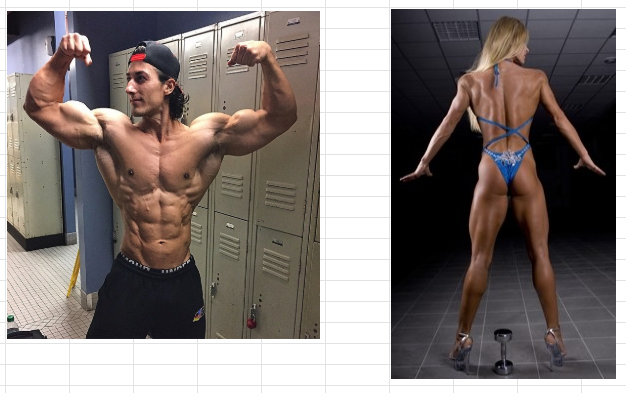 |
||||||||||
| VI. This is the look you’re looking to achieve. | ||||||||||
WE’RE ALL CONNECTED
My clients usually come to me wanting to improve a specific muscle, like their arms or chest. The problem is all your muscles are interconnected, and if you neglect one muscle you will wreck your improvements. Your muscles are enclosed in a sheath of connective tissue called fascia, which attaches to bones and muscles. This creates a unified web of crisscrossing fibers that covers your entire body.
these are ways your workout can be affect.
1. EXERCISES DON’T ISOLATE MUSCLE GROUPS
When your doing a rowing motion the lats come in play,
but since your lats are attach to your spine and pelvis,
you also engage other connected muscles that make up the core.
2. THE UPPER-BODY CAN LIMIT YOUR LEG WORKOUT
If you have stiffness in your upper body it can prevent you from working your lower body through its full range of motion, due to your fascia web. So, if you can’t perform a proper squat, don’t necessarily blame your legs. The way to fight this problem is to gain more flexibility throughout your entire body.
3. FASCIA IS AN ACTIVE TISSUE
Your fascia web stretches and recoils, increasing the amount of force available to you during exercising. The more you strengthen your fascia tissue, the more powerful you will become.
GET TOTAL BODY FIT
You want to get into the best shape of your life. Then you need to improve three aspects of your workout.
1, BUILD MORE MUSCLE
A. DO TOTAL-BODY WORKOUTS
You want to do 10-15 sets per muscle group three times a week.
B. LIFT SOMETHING WEIRD
You want to lift objects that aren’t as conveniently sized as dumbbells and barbells. The objects we move in everyday life aren’t designed this way.
Incorporate odd-shape tools into your workout like sandbags, kettlebells, and fat-grips.
C. THE PULLUP
If you want more upper-body strength, look no further than the pullup.
The goal is to do 15 reps in a row. Do 1 set of 15 in the morning and evening for three days, take the fourth day off. If you can’t do 15, work your way up.
D. DO YOUR CORE RIGHT
The two moves we all do on core day are crunches and situps. The two worst moves we can do to our spine. Do the single wall push.
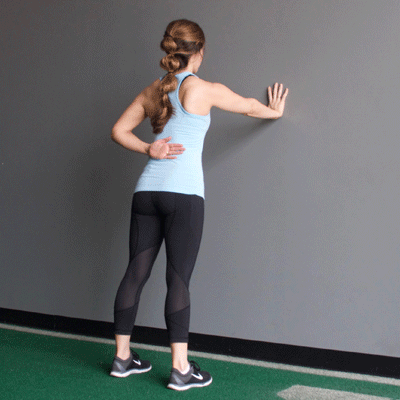
2. TO THE HEART – CARDIO TRAINING
If you want to strengthen your heart and keep the weight of, then you have to perform cardio at least three days a week.
A. RUN LIKE YOU LIFT
If you’re doing the same lifting routine everyday your gains will stop, and the and same goes for your cardio training. You should do tempo runs one day, hill runs, and finish the week with intervals.
B. DO YOUR INTERVALS
why run for five steady hours when you can get the same results in 90 minutes, It has been proven that both method produce similar results in aerobic capacity.
C. THE SIX MINUTES MILE
If you can run a mile in under six minutes then you have a strong heart.
This is also a sign of healthy bones and joints, and powerful muscles.
D. COMBINE STRENGTH AND CARDIO
End you strength workout with a quick metabolic drill to boost your heart rate and burn calories.
I have my clients do:
15 dumbbell thruster w/ sprawls :50 seconds
20 leg presses w/ pop squats :50 seconds
20 dumbbell stiff-leg deadlifts w/ burpee :50 seconds.
Each of these combos are down by doing three rounds with no break
At the end of the third round you rest for three minutes and move to the next combo.
3. IMPROVE PERFORMANCE
A. POWER UP
Power is the ability to move weight explosively. If you want to improve yours add these moves to your workout. Vertical jumps, cleans, push presses, and medicine ball slams.
B. ACTIVATE REST TIME
I hate to see people sitting and doing nothing between sets. In between sets I have my clients do HIIT exercisers. You can do high knees, jump rope, squats, running butt kicks, or mounting climbers. This will keep the blood bumping, enhance mobility, burn calories, keep muscles loose, and reduce injuries.
C. INCREASE YOUR AGILITY
If you want to perform at your best. Then you need to improve your reaction time, speed, agility. The ball drop exercise is one way to improve these three factors. Have someone drop a tennis ball five yards in front of you. Your goal is to grab the ball before it bounces twice.
PRINCIPLES OF BULKING
If you want to put on muscles then you have to lift heavy shit. If you put in the work and follow these principles. You will see remarkable results.
1. LIFT HEAVY
The muscle you’re working has to be under mechanical tension. This is using a load that the muscle isn’t use to handling. As you increase the load incrementally over time, your muscles will become stronger to be able to
handle heavier loads. On your last set the final rep should be hard to complete with good form.
2. KEEP OFF YOU ASS
We sit all do, stay on your feet in the gym. Any exercise you can do sitting down can be done standing. By standing you burn more calories and remain more focused during your workout. You should combine multiple exercises and move from one to the next with little rest in between them.
3. SPEND MORE TIME ON BIG MUSCLES
If you want to see big gains, then 80% of the work must come from working your big muscles. Begin your workout in this order legs, back, and then chest.
4. THE ASSISTING MUSCLES
You assisting muscles helps you bigger muscles in pushing, pulling lifting, and carrying. These muscles are the biceps, triceps, and deltoids.
CLEAN BULKING
Bulking is the art of intentionally gaining weight te build muscles. The more you weigh, the more weight you can lift, which leads to mors muscles. The trick is to not go full on fatso mode.
DIRTY BULKING
This is eating calorie-dense foods loaded with sugar and fat like pizza, ice cream,
cheeseburgers, cookies, and so on. At this point you’re eating food because it’s
there. This isn’t what you want to do for weight gain. You want to eat quality
food for quality gains. You want to eat foods that would fuel your workouts,
and aid in muscle recovery and repair following your workouts. The majority
of your calories should come from high-quality foods low in sugar and saturated
fat. Sugar can lead to serious health problems such as diabetes, obesity and
heart disease; and saturated fats increase you LDL cholesterol, which puts
you in a high risk for heart disease and stroke.
PUT ON, TAKE OFF
Just remember how much fat you gain will have to be taken off later. It’s a lot
harder to lose fat than it is t o gain. The more fat you put on, the more extreme
your diet will have to be with reducing carbs and calories, and the more cardio
you will have to do. When you have to do these things some muscle mass
will be lost in the process. Just try to control your cravings to stay lean
all year-round.
NO JUNK FOOD
If you don’t buy junk food, then you won’t eat it. It isn’t always that simple. There
are many in our live who doesn’t share the fit lifestyle, and things can become
a little problematic. You may share a home with kids or a spouse, who loves
their sugary theats. At this point you need willpower, and not give in to
temptation. Make a shopping list before you go th the grocery store.
If you still can’t control yourself then it’s time for an online service. They
will stick to your list and deliver your groveries to your door,
CARDIO IS YOUR FIND
You’re saying why are we doing cardio during the bulking phase. Won’t
that interfere with our muscle gains. If you’re doing HIIT exercises
for an hour five days a week, then you better believe, but that isn’t what we are doing here. We are trying to bulk up while leaning out, and that’s what cardio does. All you need is 20-30 minutes of moderate cardio three times a week with plenty of good nutrients and proper rest. It also stimulates the metabolism and improve both circulation and digestion. Let’s be honest! During the bulking phase we tend to ingest excess calories from wrong foods. Cardio exercise will help in combating these calories.
PICTURES DON’T LIE
When we look in the mirror we can stand at angles to make ourselves look better, but a picture freezes you in time. What you see is what you get. You should take pictures of yourself every two weeks in shorts, from the front, band, and side. This will help you keep accountable of your dihet and body fat. This is what you always
want to see as you are bulking. You should be able to see some abs defineation
always, and separation between the major muscle grops like the quads and upper
back. You have gone to far in your bulking, if everything is just one smooth blob.
DRINK UP
If you don’t keep you body hydrated, it can affect many parts of the body, and have negative effects on your health, performance, joints, and gains. You should look at your weight, occupation, and climate to determine how much water you need to stay hydrated. Also, you need to add extra natural electrolytes, and add sea salt to your meals (don’t go crazy) to improve water retention within the muscles.
1. RECOVERY
A hydrated body leads to nutrient transportation, assimilation, joint health, and overall gut health. In a dehydrated state the gut is unable to process food correctly; therefore, the assimilation of nutrients from food can’t be process efficiently. This will affect your ability to recover, grow, and perform.
2. RENAL HEALTH
This involves the functioning of the kidneys, which is responsible for removing waste from the body. The kidneys most process a large amount of food, protein, and supplements. The kidney can come under a lot of stress when it’s dehydrated. Water consumption helps the kidneys function properly,
processing the waste products within your body, and reduces toxins inside you. A dehydrated kidney can lead to kidney stones.
3. PERFORMANCE
The ability to transport nutrients, regenerate ATP, and flush the body of lactic acid reduces when you’re not hydrated. Your workout becomes tougher to complete, reducing your overall intensity, which affects results.
4. FLUID RETENTION
When the body is dehydrated it holds on to sodium, which makes you hold more water subcutaneously. Keeping a constant flow of water in your body helps push through any water retention. Hydration helps in the balance of your sodium balance.
5. MUSCLE VOLUMIZATION
Water makes up 80% of muscles, which is important when it comes to building muscles. When you’re hydrated muscles appears to be bigger; otherwise, you will appear flat.
There is never any good reason to allow yourself to become dehydrated. This can lead to serious problems That can effect your health and results in the gym.
BUILD YOUR HOME GYM
No more membership, sweaty strangers, or stressing to get to the gym. You can build a very successful home gym with little equipment at a reasonable budget.
Here are the best pieces of equipment to get you there.
1. DUMBBELLS
The most essential workout tool in the world. You can do hundreds of exercises with them. You should get a heavy and light pair, so you can switch them depending on the exercise.
2. CHINUP BAR
You can cover every basic movement with bodyweight except pulling. Nothing trains your back better. You can find a number of removable options.
3. FOAM ROLLER
These are great for releasing muscle tightness and recovery. They come in many options, from full-length to travel size, and small balls that are perfect for targeting the glutes, shoulders, hips, and back.
4. VALSLIDE
These are great because they keep your muscles under constant tension during every exercise. They work on floors, carpet, and tiles. They are also great for travel.
5. STABILITY BALL
They can be used to perform many bench exercisers, and very good for core strengthening.
6. TRX
They are used to leverage your own weight to adjust the resistance of any total-body move. They are very easy to setup, just hang on a door or around a banister.
7. RESISTANCE BANDS
The big ones can be used to make squats more challenging, and help with assisted chinups or pullups. The smaller ones are used to wake up the muscles in the hip and butt.
8. KETTLEBELLS
They can be used to do any dumbbell exercise, but because of its unique shape, it’s even more versatile
9. JUMP ROPE
You want to get your heart rate up to burn calories to drop weight. This is the tool to use, and they are portable
10. STEPPER, BOX, AND BENCH
the stepper and box are great for cardio workouts, and the adjustable bench adds variety to free-weights training
ANTE UP BODYWEIGHT
There are people who build great physiques without picking up any equipment, but how do you up the ante on bodyweight exercises when you adapt to these movements. Here are ways to make you workouts more challenging to continue making improvements.
1. GO LONGER
The more elongated your body becomes, the weaker you become and the more your muscles have to work. If you’re doing pushups on your knees, it’s time to do regular ones. Your body is now in a longer position, which causes your core muscles to work harder to support your body weight. Raise your hands straight up in the air when doing squats, lunges, and crunches.
2. STOP THE BOUNCE
Your muscles does this thing known as elastic energy. We know it as bouncing or using momentum to move the weight. Your muscles work as a coiled spring at the lowering position of every exercise. Which allows you to bounce back
to the starting position, and reduces the amount of work your muscles has to do. This can be prevented by pausing at the bottom position of any exercise. This will discharge all the elastic energy from the muscle, forcing your
body to recruit more muscle fibers to move again.
3, INCREASE DISTANCE
Since we can’t add an external load to increase our body weight. The next best thing would be to increase your range of motion, by moving the floor farther away from your body. Begin your lunges on a stepper, or place
your feet on a box while doing pushups.
4. DESTABILIZATION
When your balance is off it makes exercises more challenging and enlists more muscle fibers to work. Do squats, lunges, and planks on a bosu ball.
MAKE A RUN FOR IT
There are two kinds of runners. Those who run for fun, and those who are out their fucking minds. Running is great for weight-loss, cardio, endurance, and strengthening bones.
Here is a simple beginner running program.
1. CROSS-TRAINING (CT)
Do another form of aerobic exercise such as swimming, hiking. elliptical, exercise bike, rowikng machine. stairmaster, kick boxing, or hiking. Your possibility are endless.
2. STRENGTH
Your week should cosist of two strength sessions a week.
3. MAIN RUN
Choose a number of miles to run, and start at a steady-state run. Have water with you, and only stop when you have to.
4. INTERVALS
Run hard for 30 seconds, then walk or jog for 1 minute. Then repeat for the prescribed sets.
5. HILLS
Run up a hill as fast as possible, and walk back down to the bottom. Then repeat for the proscribed sets.
6. WARMUP AND COOLDOWN
Perform a ten minutes warmup and cooldown at each training session
the follow program will help you lose weight, build endurance, gain strength, and get lean.
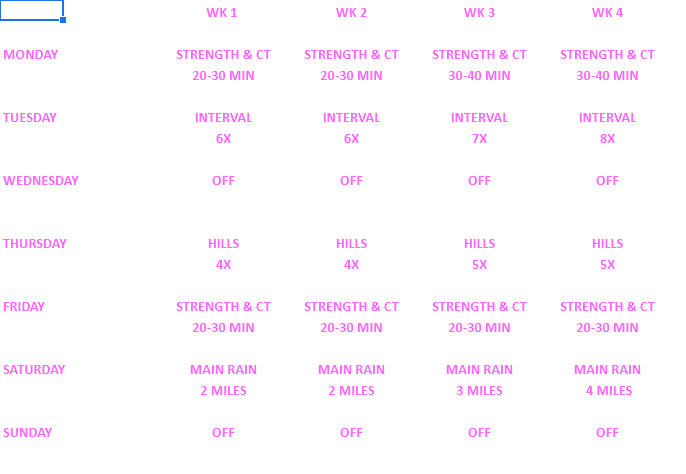
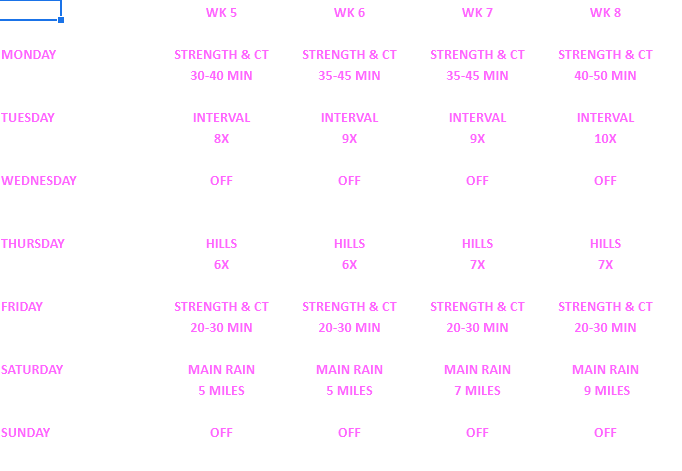
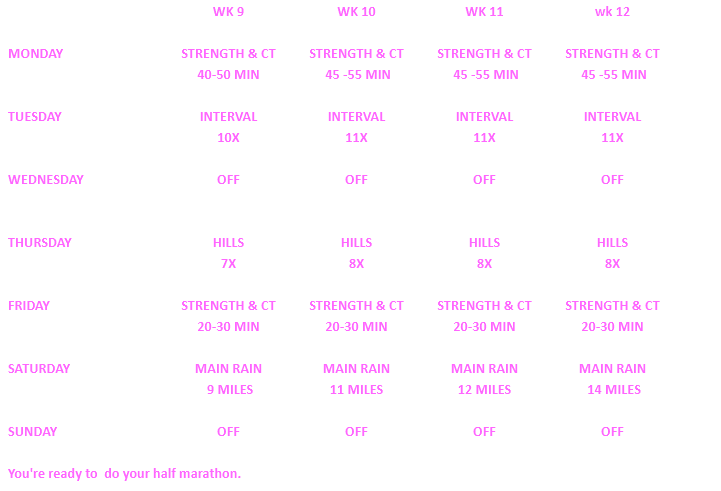
HEALTHY COOKING
So, at least three days a week you hit a resturant, drive-thru, or order takeout. Each one of those meals could contain more than one-third of the USDA daily recommendations of calories, sodium, and saturated fat. The fast food you
eat can affect you mental and physhical health. You can improve your overall health by having a home cook meal thrree times a week. Here are some simple cooking and prepping methods
A. ROASTING
When you roast food, it enhances it’s natural flavor, by caramelizing the sugars you fine in meats and vegetables. One good thing about roasting is very little prep is needed. Just coat your ingredients with salt, pepper, and olive
oil. Preheat the oven to 400F. Vegetables are done when they start to brown on the outside, and are tender in the insidde, after about 35-40 minutes. A meat thermometer should be used to determine when it’s done.
B. BROILING
This is cooking food directly under exposed high heat. This gives your meal a crispy texture on the outside, a moist and juicy inside. Use methods when you want a golden-rown texture on your fish, and thin cuts of meat like flank or skirt steak or lamp chops. Just sprinkle some salt and pepper on your meat, and drizzle some olive oil ane lemon juice on your fish. A thin, rare steak should be cooked for 3 minutes per side; whereas a well -done thick steak would
take 9 minutes per side to cook.
C. SLOW COOKING
This is a dream come true. Most slow cooker foods require very little prep, and the recipes are easy. Just put in the ingredients, turn it on, and walk away. It’s good for cooking meats and vegetables. Put in wine, beer, vinegar or chicken stock with your meat and vegetables, and come back in 8 hours.
No more need for soaking beans over night. Cover your dried beans with water. add garlic, and cook for 4 hours on low.
I must admit to never cooking a meal in my life. I was priviledge to go from my mom’s to my wife cooking, but a home cooked meal is the way to go. You should also do some research on blending and sauteing of foods.
THE IMBALANCE
Did you know that everyday habits, your wardrope, or repetitous workouts can cause muscle imbalance? Every muscle has a muscle that does the opposite function. If you workout your biceps more then triceps, they will become much stronger, and over power your triceps, causing an imbalance between the two muscles. When one muscle is weak, the opposite one has to work harder, causing the entire system to suffer.
CHEST VS BACK
Does your day consist of sitting over a keyboard for hours? This could lead to shoulder and posture issures. This is caused when your chest muscles are tight, and your back muscles are weak.
The test:
1. Lie faceup with your palms facing in.
2. Raise your arms overhead until they hit the floor.
3. If your back arches, palms turn towards the ceiling, elbows point out, or you can’t touch your arms to the floor.
4. you have an imbalance
the fix: LYING DUMBBELL PULLOVER
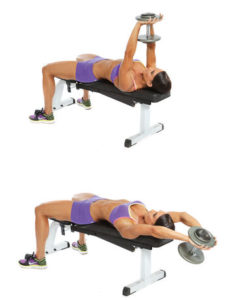
QUADS VS HAMSTRINGS
Men can do squats all day long, just because it’s a power move. Women are anatomically builded to have stronger quads, because of their wider hips, which throws off lower-body alignment and makes it difficult for the hamstrings work properly. When you fix this inbalance by strengthening the hamstrings, you lower your risk for injury, increase your running speed and overall power..
The test:
1. Stand in front of a chair a foot away from a wall.
2. Toes six inches from the wall.
3. Feet hip-width apart.
4, Raise your arms overhead and chest upright.
5. Squat into the chair.
6. If you lose your balance, raise your heals of the floor, or touch the wall.
7. You have dominant quads.
The fix: STABILITY BALL LEG CURL AND KNEELING GUAD STRETCH
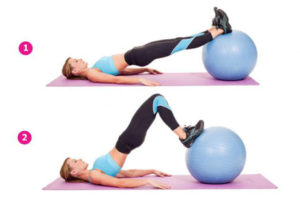
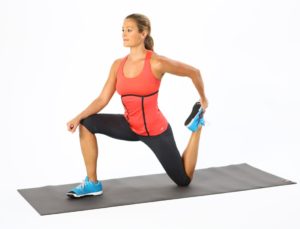
GLUTES VS HIP FLEXORS
The glutes muscles are the powerhouse of the lower body, but the more we sit around, the weaker they become. The hip flexors at the same time becomes short and stiff, causing the pelvis to tilt forward, which causes an arch of the back and puts stress on the spine. It pushes your abdomen out.
The test:
1. Sit on a table with your feet hanging down.
2. Bring one knee up to your chest.
3. Wrap your hands around that knee and lay on the bench.
4. If your thigh doesn’t rest on the table.
5. Your glutes are weak.
The fix: GLUTE BRIDGE, BARBELL HIP THRUSTER, AND GLUTE KICKBACKS
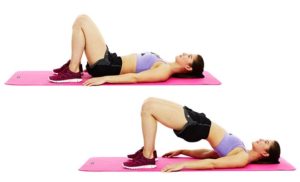
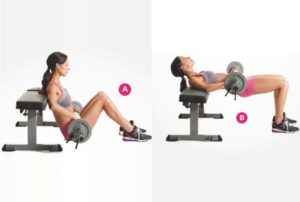
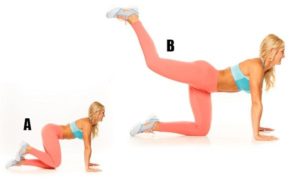
Let’s fix those imbalances among our muscles.
WOMAN ASSESSMENTS
After months of procrastination the time has come. You are going to improve your health. You purchased workout gear, shiny new sneakers, and even a gym membership. You been hitting the gym three days a week getting your money worth, but are you really ready. I watch people aimlessly workout in the gym all the time. These are people who go from exercise to exercise just picking up shit, and even worst have no idea of where to start. Ladies, this is where I come in. I’m going to show you how to assess your fitness level. This way you can make a plan of where you’re heading. I’m going to explain a series of exercises so you know just where to begin, to get you to the end of your goal. These four exercises are to assess your muscular endurance of your uppr, middle, lower, and core body. Record your results with the date, and after three months of training, repeat the test. You should also take a PAR-Q questionnaire.
UPPER BODY – KNEE PUSH – UP
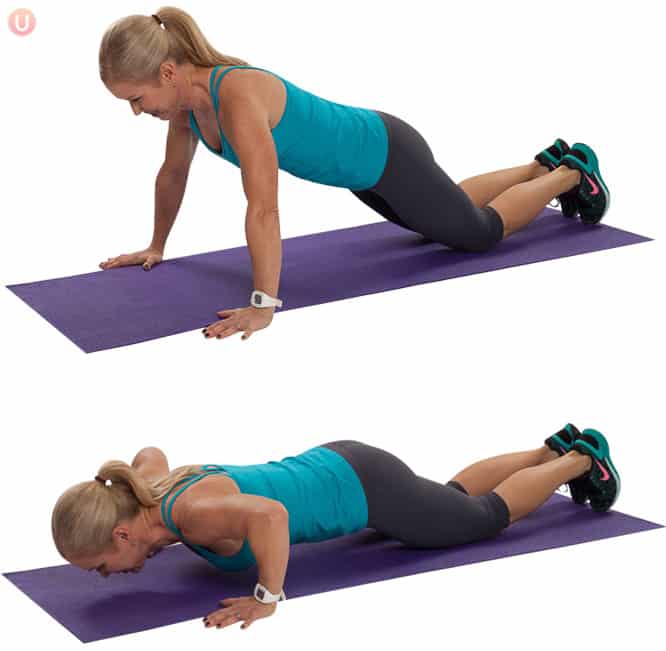
Lower you chest to the , as you inhale and bend your elbows. Exhale as you push back up. Count how many you can do without stopping.
| Excellent |
20 reps or more
|
||
| Good |
15 – 19 reps
|
||
| Fair |
10 – 14 reps
|
||
| Poor |
10 reps or less
|
MIDDLE BODY – CRUNCH
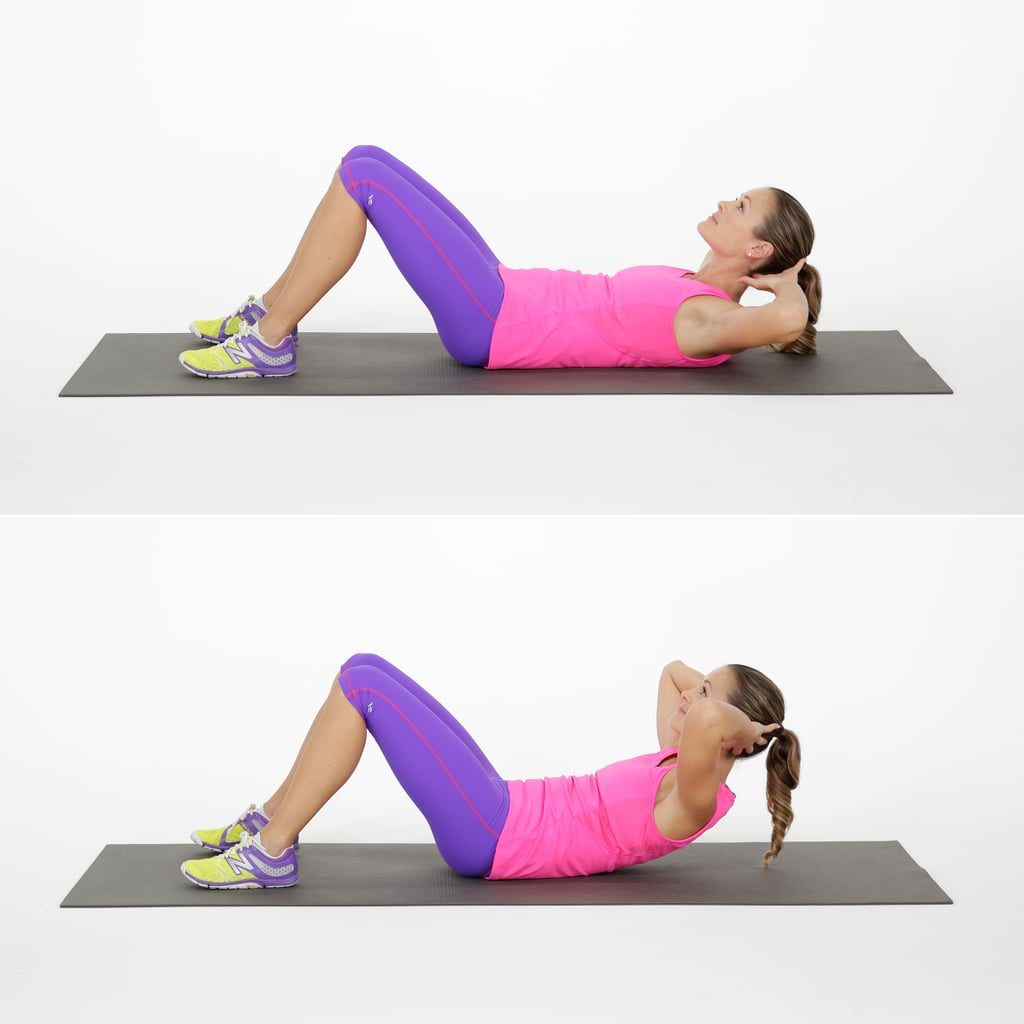
Lay flat on your back with knees bent, and lift your shoulders off the ground.
Count how many you can do without stopping.
| Excellent |
50 reps or more
|
||
| Good |
35 – 49 reps
|
||
| Fair |
20 – 34 reps
|
||
| Poor |
20 reps or less
|
LOWER BODY – WALL SIT
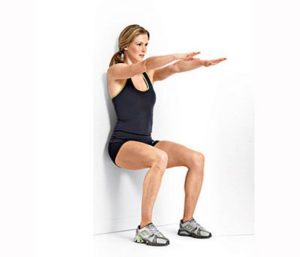
Place your back against a wall, and slide down until your thighs are
parallel to the floor. Hold the position for as long as possible.
| Excellent |
90 seconds or more
|
||
| Good |
60 seconds
|
||
| Fair |
30 seconds
|
||
| Poor |
less than 30 seconds
|
CORE BODY – PLANK
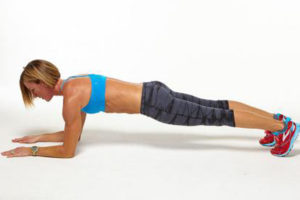
Support your body in a straight line by tighting the abs, on the elbows and toes.
Hold the position for as long as possible.
| Excellent |
90 seconds or more
|
||
| Good |
60 seconds
|
||
| Fair |
30 seconds
|
||
| Poor |
less than 30 seconds
|
PAR-Q QUESTIONNAIRE
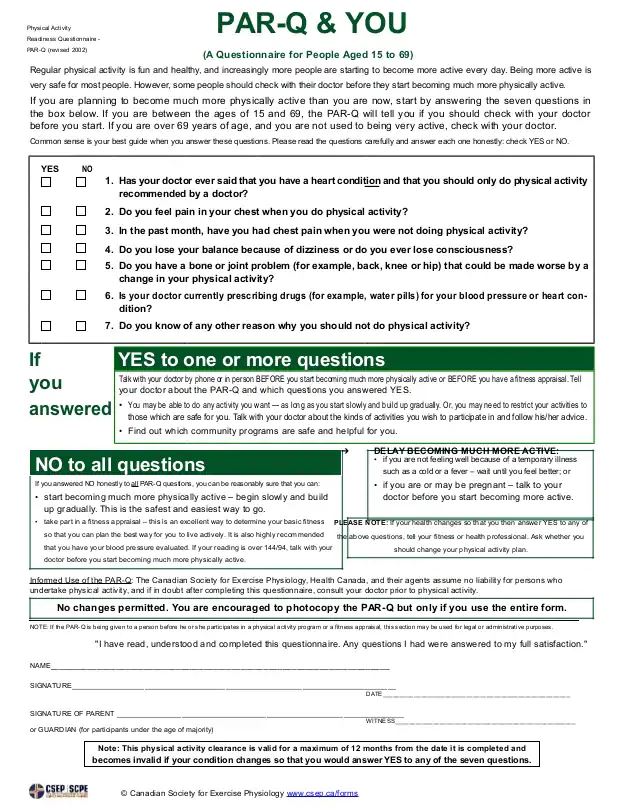
When you are starting a new training program, you should see if you are
healthy enough to start. The questionnaire offers a series of questions
that may lead you to seek medical attention before becoming more
physically active.
RECOVERY TIME
If you want to be able to push yourself during each workout. Then the body needs
rest and recovery. Recovery allows you to give maximal effort each time you
hit the gym, prevent injuries and critical for consistent training.
NUTRITION & HYDRATION
What you eat after a workout is very important. Protein is required to rebuild muscle tissue, because it’s the building block of new muscle. Carbs are needed to replenish glycogen that were depleted during workouts. They supply the muscles with new energy.
A hydrated body leads to nutrient transportation, assimilation, joint health, and overall gut health. In a dehydrated state the gut is unable to process food correctly; therefore, the assimilation of nutrients from food can’t be process efficiently. This will affect your ability to recover, grow, and perform.
FOAM ROLLER
Self-myofascial is a key component of recovery. Fascia is connective tissue that wraps around our muscles. As we are working out, this tissue can become tense or constricted, causing pain. Foam rolling helps in targetting specific spots in the muscle to alleviate stiffness and soreness, promote circulation of oxygenated blood, and breaks up scar tissue and restrictions in the fascia. The roller allows you to target specific spots in the muscle that may be causing pain.
CLEAN BULKING
Bulking is the art of intentionally gaining weight te build muscles. The more you weigh, the more weight you can lift, which leads to mors muscles. The trick is to not go full on fatso mode.
DIRTY BULKING
This is eating calorie-dense foods loaded with sugar and fat like pizza, ice cream, cheeseburgers, cookies, and so on. At this point you’re eating food because it’s there. This isn’t what you want to do for weight gain. You want to eat quality food for quality gains. You want to eat foods that would fuel your workouts, and aid in muscle recovery and repair following your workouts. The majority of your calories should come from high-quality foods low in sugar and saturated fat. Sugar can lead to serious health problems such as diabetes, obesity and heart disease; and saturated fats increase you LDL cholesterol, which puts you in a high risk for heart disease and stroke.
PUT ON, TAKE OFF
Just remember how much fat you gain will have to be taken off later. It’s a lot
harder to lose fat than it is t o gain. The more fat you put on, the more extreme
your diet will have to be with reducing carbs and calories, and the more cardio
you will have to do. When you have to do these things some muscle mass
will be lost in the process. Just try to control your cravings to stay lean
all year-round.
NO JUNK FOOD
If you don’t buy junk food, then you won’t eat it. It isn’t always that simple. There are many in our live who doesn’t share the fit lifestyle, and things can become a little problematic. You may share a home with kids or a spouse, who loves their sugary theats. At this point you need willpower, and not give into temptation. Make a shopping list before you go th the grocery store. If you still can’t control yourself then it’s time for an online service. They will stick to your list and deliver your groceries to your door.
CARDIO IS YOUR FIND
You’re saying why are we doing cardio during the bulking phase. Won’t that interfere with our muscle gains. If you’re doing HIIT exercises for an hour five days a week, then you better believe, but that isn’t what we are doing here. We are trying to bulk up while leaning out, and that’s what cardio does. All you need is 20-30 minutes of moderate cardio three times a week with plenty of good nutrients and proper rest. It also stimulates the metabolism and improve both circulation and digestion. Let’s be honest! During the bulking phase we tend to ingest excess calories from wrong foods. Cardio exercise will help in combating these calories.
PICTURES DON’T LIE
When we look in the mirror we can stand at angles to make ourselves look better, but a picture freezes you in time. What you see is what you get. You should take pictures of yourself every two weeks in shorts, from the front, back, and side. This will help you keep accountable of your diet and body fat. This is what you always want to see as you are bulking. You should be able to see some abs definition always, and separation between the major muscle grops like the quads and upper back. You have gone to far in your bulking, if everything is just one smooth blob.
WEIGHT TRAINGING GOALS
I don’t think that most gym goers understand there’s a science behind their training goals. We tend to just go with it and hope for the best. We follow other gym goers or read pointless comments on the internet from people who claim to be experts. Weight training can increase muscle endurance, hypertrophy (muscle size), strsength, and power by using these valid guidelines for achieving different goals.
MUSCLE ENDURANCE
Guidelines to reach goal:
Sets: 1-3
Reps: 15-20
Time between sets: 30 -60 seconds
Exercise types: single and multi-joimt
Weight: light-moderate
Benefits of muscle endurance training:
Increase everyday stamina
Imkprove balance and coordination
Increase muscular endurance
Consistent energy levels
Osteoporosis prevention
Improved bone density and strength
Optimized immune system function
Reduce insulin resistance
Raise metabolism caused by increase muscle mass
HYPERTROPHY
Guidelines to reach goal:
Sets: 4-6
Reps: 8-15
Time between sets: 1-2 minutes
Exercise types: single and multi-joimt
Weight: moderate – heavy
Benefits of muscle hypertrophy training:
Strength Potential:
A bigger muscle is a stronger muscle
Storage of Elastic Energy:
Eccentric training can make tendons and the part of the muscle closest
to the tendons (distal portion) thicker. This gives you the ability to
store more elastic energy when absorbing force (e. g. it.’s like sprinting
as your feet strikes the floor). This can turn into potential energy, and
imprve concentric training. If you want to improve power, speed or
agility. Your stretch reflex must be strong, which comes from having
thicker tendons.
Power Potential:
Strength is the foundation from hypertropy i. e. the ability to generate force,
and power is the founddation from strength i. e. the ability to generate
force with speed.
Injury Prevention
Increase Insulin Sensitivity:
You want to train your muscles to use carbs for fuel during workouts imstead
of insulin. Hypertrophy training requires a lot of muscle glycogen. This creates
room in the muscle to store carbs, and thus you won’t need as much insulin
to complete you workout.
Energy Expenditure:
A hypertrophy workout can increase energy expenditure by 500-600 calories or more depending on your strength, body weight, and work capacity. Our energy expenditure stays elevated for a few hours after a workout. This is due to elevated adrenaline and cortisol that occurs during your session. So, if you burn 500 kcals during your work, you can burn an extra 5-10% (25-50 kcals) within those hours after your workout.
Quality of Life
It has been proven that resistance training improves the quality of life amongs
the elderly.
Prevention of Muscle Mass
At tje age of 50 we begin to loss roughly 0.5 – 1% of muscle mas every year,
At 70-years old you could have already lost up to 20% of muscle mass.
Hypertrophy training is an effective way of preventing or reversing
the process.
Osteoporosis
The mechanical load on bones leads to increase bone strength. Resistance
training may be the best way to improve muscle and bone mass in the
older population, middle-aage men, and postmenopausal women.
STRENGTH
Guidelines to reach goal:
Sets: 3-5
Reps: 3-8
Time between sets: 3-5 minutes
Exercise types: single and multi-joimt
Weight: heavy – massive
Benefits of muscle strenght training:
The ability to perform movements and activities that require power without getting tired. Muscular strength burns calories and enhances your body composition to maintain a healthy body weight. It’s known for boosting mood, energy, and sleep. This helps in developing good posture and relieve back pain.
You’ll have etter flexibility. stability and balance, making falls and injuries less likely.
POWER
Guidelines to reach goal:
Sets: 3-5
Reps: 1-3
Time between sets: 5-8 minutes
Exercise types: single and multi-joimt
Weight: massive – extreme
Benefits of muscle power training:
Recruits large amounts of muscle fibers
Muscles are made up of three types of fibers. They are type I, type II, and type IIa muscle fibers. We will only be discussing type I and II in this discussion. The activity that needs to be performed determines with fiber gets recruited. Lets say during the weekend you decide to clean the whole house and then do a five miles run. Your muscles will than recruit type I fibers, because these activites involves oxygen and endurance. If you choose to do sprints or power liftimg. Your muscle will recruit type II fibers, because these activities doesn’t require oxygen and produce power and strength.
Inprove type II muscle fibers to generate high amounts of force in a short period of time
Type II fibers can generate energy from glycogen or stored adensi ne triphosphate (ATP) without the use of oxygen to produce force. They also provide nuscle with its shape and size, which makes power training an effective tool for improving aesthetic appearance.
Functional benefits
Power training helps your ability to perform quick and explosive movements to benefit in daily life. As your power increase, so does the ability to lift heavy objects, climb stairs, and quickly react to prevent injuries.
Increase metabolism
Power lifting builds muscle which leads to an increase in rest metabolism rate. Muscle burns more calories which improves your metabolism and cause weight loss.
Injury prevention
Power training improves joint stability to profect against injuries by strenghtening muscles. This reduces the risk of strains, sprains, and breaks.
Bone health
Power training can stimulate bone remodeling and increase bone density. because it helps with the prevention of osteoporosis.
FAST AND SLOW PROTEINS
Proteins can enhance muscle growth and repairs. Fast and slow are just terms use to describe how proteins gets digested, absorbed, and delivered to the muscles for protein symthesis. The timing of protein consumption can also play a crucial role in optimizing of muscle growth and recovery.
Fast proteins
Fast proteins provide amino acids to the muscles relatively quickly . They are rapidly digested and absorded by the body.
They should be consumed post-work out, because they initiate muscle recovery quickly.
Whey and egg white are known forf their fast proteins, especially Whey which contains a high content of essential amino acids, and gets digest very quickly.
If you’re an older adult trying to maintain muscle mass. You should comsume 80% of fast proteins daily.
Slow proteins
Slow proteins are digested and absorbes at a slower rate.
These proteins provide amino acids over a longer period of time.
You want to consume slow proteins for times when you need a steady supply of amino acids, like periods of fasting or when you’re unable to eat for an extended duration
A classic slow-digesting protein is casein, found in everyday dairy products. It forms a gel-like substance in the stomach, leading to a slower release of amino acids.
Slow proteins are best when consumed in the morning when energy is needed throughout the day. or before bed time when you want to build muscle as you sleep.
It’s important to understand that the digestion and absorption of these proteins can be influenced by specific protein source, the presence of other nutrients, and individual variations in digestion. The timing of protein consumption can also play a role in optimizing muscle growth, recovery and nutrition.
